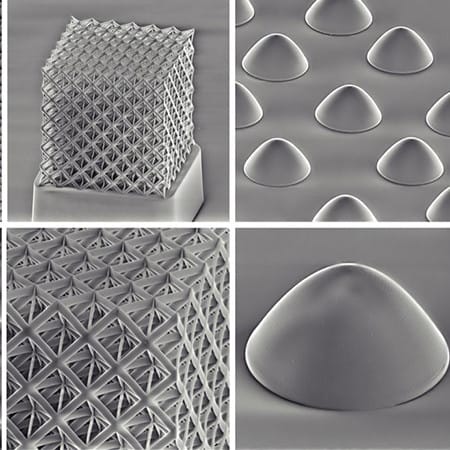A new process to produce transparent quartz glass at far lower temperatures than previously needed has created intricate nanoscale structures.
The method, which produced structures with high resolution and ‘excellent’ mechanical properties, was developed by a team led by Dr Jens Bauer at the Karlsruhe Institute of Technology (KIT) in Germany, along with colleagues at the University of California, Irvine, and the Edwards Lifesciences company in Irvine.
Printing of micro- and nanometre-scale quartz glass structures from pure silicon dioxide “opens up many new applications in optics, photonics, and semiconductor technologies”, the researchers said, but processes have so far been based on conventional sintering. Temperatures required for sintering silicon dioxide nanoparticles are above 1,100°C, which is much too hot for direct deposition onto semiconducting chips.
In the new work, the team used a ‘hybrid’ organic-inorganic polymer resin as the feedstock material. The liquid resin consisted of polyhedral oligomeric silsesquioxane (POSS) molecules, which are small cage-like silicon dioxide molecules equipped with organic functional groups.
To access please sign in.
